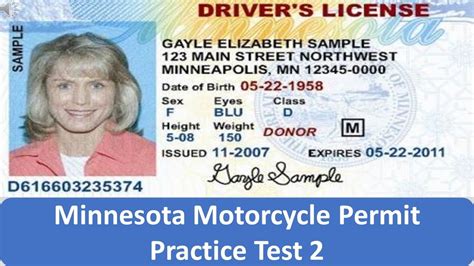Motorcycle License MN: Your Fastest Route to the Open Road
The thrill of the open road, the wind in your hair, the rumble of the engine beneath you – the allure of motorcycle riding is undeniable. But before you can experience that freedom, you need a motorcycle license in Minnesota. This comprehensive guide will walk you through the process, helping you obtain your MN motorcycle license as quickly and efficiently as possible.
Understanding Minnesota's Motorcycle Licensing Process
Minnesota's motorcycle licensing system is designed to ensure rider safety and competency. It involves several steps, including written and skills tests, and requires specific documentation. Let's break it down:
1. Meet the Eligibility Requirements
Before you even begin, ensure you meet the basic requirements:
- Age: You must be at least 16 years old to obtain a motorcycle permit and 18 years old for a Class M license (allowing you to operate motorcycles of any size).
- Identification: You'll need valid identification, such as a driver's license or state-issued ID card.
- Proof of Residency: Demonstrate proof of Minnesota residency.
2. Complete the Motorcycle Safety Foundation (MSF) Basic RiderCourse (BRC)
While not mandatory, completing the MSF Basic RiderCourse is highly recommended. This course provides crucial training on motorcycle operation, safety, and handling. It significantly increases your chances of passing the skills test and, more importantly, equips you with the knowledge and skills to ride safely. Many insurance companies offer discounts to riders who complete the MSF course.
3. Obtain a Motorcycle Permit
Once you meet the requirements (or after completing the MSF BRC), you can apply for a motorcycle permit at your local Driver and Vehicle Services (DVS) office. This involves:
- Passing a Written Exam: This exam tests your knowledge of Minnesota motorcycle laws, safety rules, and traffic regulations. Study materials are readily available online and at DVS offices.
- Submitting the Application: Complete the necessary paperwork and provide the required documentation.
- Paying the Fees: There's a fee associated with the permit application.
4. Practice, Practice, Practice!
After obtaining your permit, the crucial next step is practice. The more you ride, the more confident and competent you'll become. Practice in a safe, controlled environment, preferably with a supervising licensed rider.
5. Schedule and Pass the Motorcycle Skills Test
Once you've had sufficient practice (at least 15 hours of supervised practice riding is recommended), schedule your motorcycle skills test at a DVS-approved testing location. This test assesses your ability to safely operate a motorcycle, including:
- Slow speed maneuvers: Turning, stopping, and balance exercises.
- Basic riding skills: Acceleration, braking, and cornering techniques.
- Emergency maneuvers: Swift reactions to potential hazards.
6. Obtain Your Motorcycle License
Upon successfully completing the skills test, you'll receive your Minnesota Class M motorcycle license!
Frequently Asked Questions (PAAs)
Here are some common questions about getting a motorcycle license in Minnesota:
How long is a MN motorcycle permit valid?
A Minnesota motorcycle permit is typically valid for one year.
Can I take the motorcycle skills test on my own bike?
Yes, you can, provided it meets the DVS requirements for safety and operability. However, many test locations provide motorcycles for those who prefer not to use their own.
What is the cost of getting a motorcycle license in MN?
The exact costs vary depending on fees for the permit, exam, and license. Check the DVS website for the most up-to-date information.
Do I need a separate motorcycle endorsement on my driver's license?
Yes, the Class M motorcycle license is an endorsement added to your existing driver's license.
Where can I find motorcycle safety courses in MN?
The Minnesota Department of Public Safety website lists approved motorcycle safety courses and training providers.
By following these steps and preparing thoroughly, you'll be well on your way to enjoying the open road on two wheels. Remember safety is paramount. Always wear appropriate safety gear, ride defensively, and continue practicing even after obtaining your license. Safe riding!

